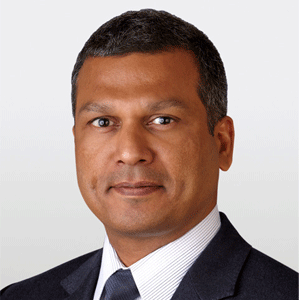THANK YOU FOR SUBSCRIBING

Changing Landscape of Data Science Technology Utilization
Agus Jamaludin, Deputy Data Science Manager, PT. PetroseaTbk


Agus Jamaludin, Deputy Data Science Manager, PT. PetroseaTbk
In your experience as deputy data science manager, what would you say are some of the changes you have witnessed in recent times regarding the implementation and use of technology?
Some of the changes I have witnessed in recent times regarding the implementation and use of technology is the use of cloud solutions as the part of big data era. Today, we can easily implement big data on the cloud with all the benefits that we can get from each cloud solutions provider. There are three main types of cloud services which are Infrastructure-as-a-Service (IaaS), Platforms-as-a-Service (PaaS), and Software-as-a-Service (SaaS). Especially for data science, we can run any big data analytics without worrying about the performance due to the data size and growth because most of the cloud solutions already use distributed computing and provide auto-scale. Even some of the cloud solutions also provide downscale. As we know building robust statistical or predictive models usually needs a lot of data especially when we train unstructured data such as text, image, video, and audio. The most cloud solution also takes care of data security and privacy, there is a lot of security service that we can enable to secure the data. There is no system secure but as long we well configured the system, we can minimize the risk. Most of the cloud solutions also take care of data availability by implementing data redundancy which is we can configure whether the data will be replicated in the same location (local), same region (zone), or cross-region (geo-zone). So, if there is anything happened, we still can access the data. In terms of cost cloud solutions provide pay-as-you-go so we only pay for what we use and as long as it is well configured, we can minimize the cost.
Can you also elaborate on how you identify and evaluate data and make sense of it to design and implement statistical/predictive models?
As we know that the most challenging part of solving a problem using data is data preparation. Starting from data acquisition or data collection, followed by data understanding which is we do exploratory data analysis (EDA) and last is data pre-processing which is we transform the data based on the result of our data understanding or EDA. To evaluate data and make sense of it to design and implement statistical/predictive models first we need no make sure the data acquisition is getting the right data from the right source based on the data requires that we define at the beginning during conception and formulation. We make sure that the data is related to the problem statement and the analytical approach that we used to solve the problem. We also need to make sure that the ETL pipeline is running well, whether the data need to update by schedule or real-time.
Second, to evaluate the data we need to communicate what we found during exploratory data analysis with the business user to check the fact that we found the data such as data trends, data distribution, and so on is the reflection of the actual events. If there is some data not reflected in the actual events it might be the data is not valid or there might be any manual adjustment or we need to combine it with other data.
Last, we make sure we perform the right data transformation based on what statistical/predictive models we want to design and implement. During the design and implementation is also important to pay attention to the data size and growth especially if running the process on a premise that cannot automatically scale up the computing power
What are some of the challenges that are currently affecting businesses and effective data utilization, and how can organizations combat them?
First, most of the users have less understanding of data science so sometimes it's difficult to define the use cases, usually, we arrange sharing sessions to give users an overview of what is data science and how we other utilize the data to solve a business problem.
Second, the most challenging of data utilization is the scattered data. Scattered data makes data governance bad. Everyone has their own data with a different format. To tackle this problem, we need to create a single truth of data that integrate all the data source then dump all the data into the data lake and make it the same format.
There Are 4 2 A Zure Data Cente Rs Spread Around The Globe, Which Is The Highest Number Of Data Centers For Any Cloud Platform. Also, Azur E Is Pl Anning To Get 1 2 More Data Center S, Whi Ch Will Increase The Number Of Data Centers To 54
The third challenge is a data breach. In the digital era, people can easily share data. To prevent data leak company, make sure that we implement highly secure data protection. From a technical perspective, there are many things that we already implement. We make sure all the security setup is well configured including data security for sharing points and especially for our data warehouse. For example, protect the data with a strong password, encrypt the data, only can access via our internal VPN, and so on. From a human perspective, we arrange cyber security sharing sessions so all people in the organization are aware related to security and privacy.
Fourth, the main importance is change management. Almost all digital transformation including data utilization needs change management. Change management is the key to digital transformation. First, we need to prepare for the changes start by performing a risk analysis and an organizational readiness assessment. Second, we need to manage the change, Once the transformation is underway shift from preparing for change to managing it. Start to execute your communication plan, resistance management plan, and training plan. Last, reinforce the change. Change management doesn’t stop once a digital transformation is complete. It’s important to check back in with the employees by gathering feedback to assess whether efforts were successful and monitor for any signs of resistance.
Please brief us on some of the major technology leaps that are driving the O&G industry to transform its operations and sustainability initiatives.
First is the digital twin, by having a virtual model of a physical object and integrating it with real-time data we can simulate the behavior and monitor the operations.
Second is the utilization of artificial intelligence such as machine learning to optimize operations and sustainability initiatives. For example in mining, the machine learning model recommends to the operator how many dump trucks need to deploy to make the production optimize but minimize the cost. There is also machine learning and IoT utilization to make the operator safe by detecting if the operator is fatigued or not using computer vision. We can also collaborate the digital twin with machine learning such as developing a predictive maintenance model and then showing the part that will fail and need to be replaced in the future in real-time.
What are some of the data science trends that your company plans to incorporate into its existing infrastructure, and why?
First, currently, my company is in the progress build a data lake for our single truth of data by migrating our data to the cloud. Second, we already have some running data science use cases such as mining operation optimization, predictive maintenance, and some computer vision use case that help in reading mineral exploration journals. We planned to refactor all of our existing data science use cases to use machine learning services on the cloud, so we can manage and monitor all the data science use cases.
Third, some of the new data science use cases that we plan to implement such as the collaboration of digital twin and machine learning that I mentioned previously, text classification to help operators classify safety reports using deep learning, fatigue detection using computer vision, and so on.
Fourth, the collaboration of blockchain. As we know that the technology of blockchain is very powerful.
As an ending note, what is your advice for other senior leaders and CXOs working in the retail sector?
Data science and in general digital transformation is a long journey. And the journey is like a J curve. The digital transformation required commitment. If we can pass the critical point that usually, many organizations stop we will get the impact of digital transformation. Fail fast and learn fast.












